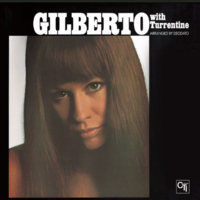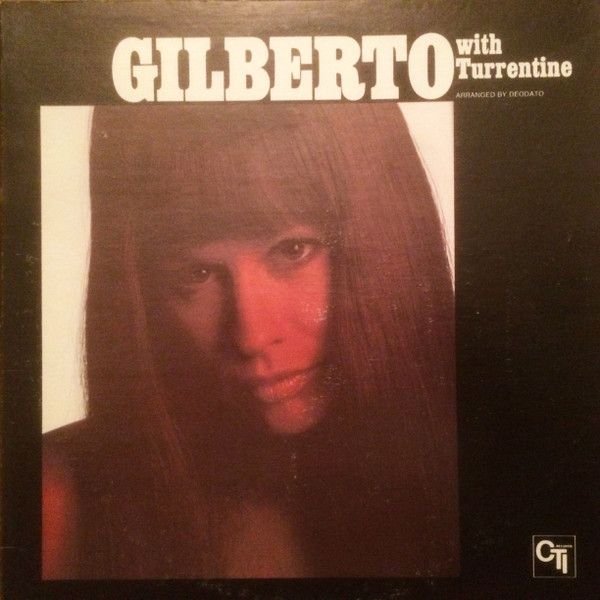 Astrud Gilberto: Gilberto with Turrentine
Astrud Gilberto: Gilberto with TurrentineCTI Records CTI 6008
Released 1971
- A1: Wanting Things 2:35
- A2: Brazilian Tapestry 5:10
- A3: To A Flame 3:17
- A4: Solo El Fin (For All We Know) 3:10
- A5: Zazueira 3:40
- B1: Ponteio 3:35
- B2: Travelling Light 3:25
- B3: Vera Cruz 5:05
- B4: Historia De Amor (Love Story) 3:29
- B5: Where There's A Heartache 3:10
Bass – Ron Carter, Russell George
Cello – George Ricci
Conductor – Deodato*
Drums – Airto Moreira, Dennis Seiwell*, Dom Um Romao, Joao Palma*
Electric Piano – Eumir Deodato
Engineer – Rudy Van Gelder
Flute – George Marge, Hubert Laws, Jerome Richardson, Romeo Penque
Guitar – Gene Bertoncini, Sam Brown (2), Sivouca*
Harmonica – Toots Thielemans
Percussion – Airto Moreira, Dennis Seiwell*, Dom Um Romao, Joao Palma*
Producer – Creed Taylor
Soloist [All Solos], Guitar – Bob Mann
Tenor Saxophone – Stanley Turrentine
Viola – Harold Coletta
Violin – Emanuel Green, Gene Orloff, Harry Katzman, Joe Malin, Julie Held, Paul Gershman
Recorded at Van Gelder Studios
January, February, March, April 1971
Amazon product ASIN B0000026IV
Astrud Gilberto with Stanley Turrentine, Astrud Gilberto - Qobuz
Listen to unlimited or download Astrud Gilberto with Stanley Turrentine by Astrud Gilberto in Hi-Res quality on Qobuz. Subscription from $10.83/month.

Gilberto With Turrentine - Gilberto With Turrentine
Explore songs, recommendations, and other album details for Gilberto With Turrentine by Gilberto With Turrentine. Compare different versions and buy them all on Discogs.
 www.discogs.com
www.discogs.com


